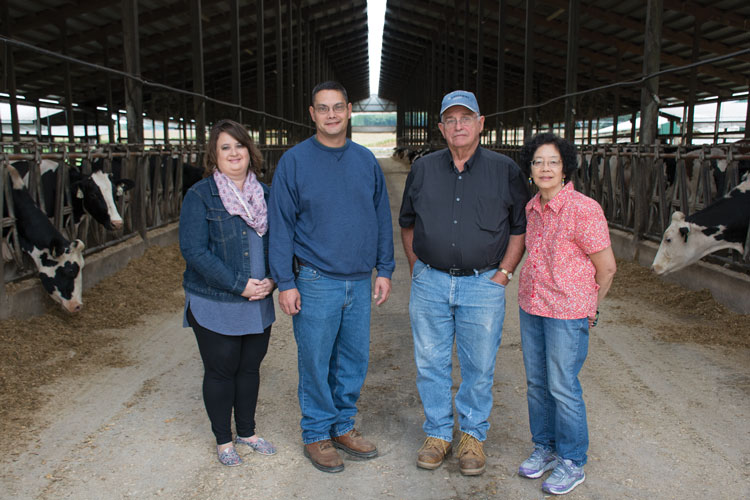
“Two of the biggest reasons we are culling in our lactating herd right now are mastitis and feet and leg problems,” shared Luke Haywood, who milks 1,150 cows on his family’s Sand Creek Dairy in Hastings, Mich.
“These are two areas we hope to continue to improve. To that end, the new dairy wellness traits should help minimize the impact of these issues,” he continued.
Three additional operations shared insight into their farms in this Hoard’s Dairyman Intel as well as the Round Table, “They make the most of genomic testing” found on pages 118 to 120 of the February 25 issue of Hoard’s Dairyman.
Here are their responses to the question, “What traits do you wish you had new or better evaluations on?”
Ahlem Farms Partnership, Hilmar, Calif.: The DPR (daughter pregnancy rate) trait is one that has been somewhat frustrating for us. There have been some bulls that have been negative or positive based on genomic tests, but once they add daughters, they have moved quite a bit. It’s a low heritability trait, so I understand the challenges in getting that accuracy.
When we look back, there have been some bulls that we have not used because their DPRs were low and yet now that they have daughters, they have improved. So we have lost a couple years of that opportunity because the genomic evaluation was not as accurate as we had hoped. That’s going to take time with more and more records. I think they are going to improve that accuracy. For some of the health traits, just a little more reliable information would be beneficial as well.
George DeRuyter and Sons Dairy, Outlook, Wash.: The traits currently available work well for us. I think there will be a time when we will use more of the health traits. I have used them on a few animals, and on some of our highest cows we will continue to use it. Going forward, I think that will happen more and more, especially for donors.
Welcome Stock Farm, Schuylerville, N.Y.: Currently, a lot of research is going into capturing the data to evaluate metabolic disorders, immunity boosting genes, and foot health. When the research and reliability become firm enough, this will continue to help dairymen breed more efficiently and lower maintenance costing cattle. I look forward to this data and the many new revelations that continue to occur through genetic research and breeding.
To comment, email your remarks to intel@hoards.com.








